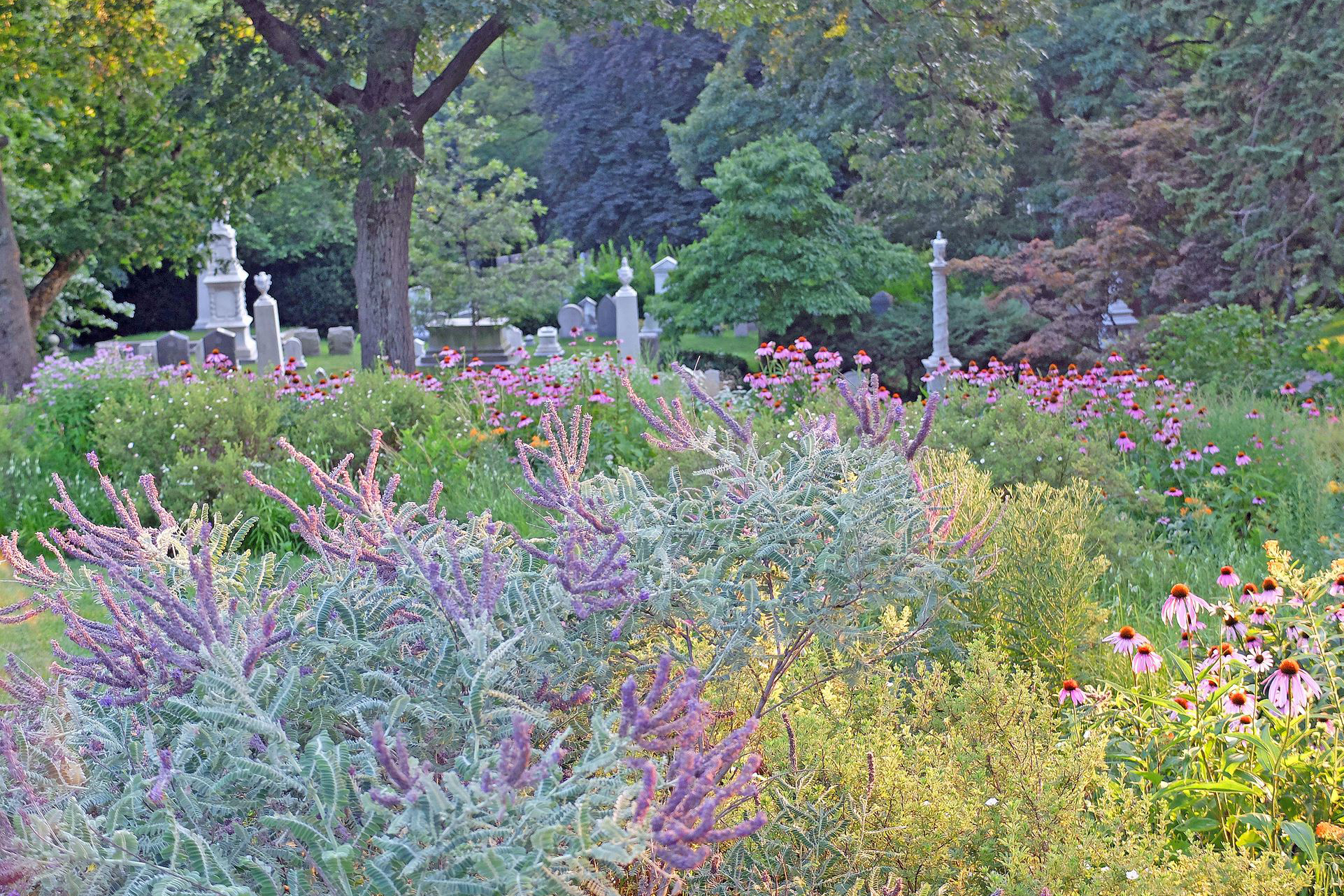When you ask Dave Barnett ’78 (CAHNR) to show you his favorite spot at Mount Auburn Cemetery in Cambridge, Massachusetts, one of the country’s premier historic graveyards, he won’t drive you to see one of the many notables buried here, such as Henry Wadsworth Longfellow. Instead the cemetery director steers his van deep into the vast landscape and then pulls over to point out a shallow pond. Despite the rain he announces, “Let’s get out and have a look!”
The vernal pool, which is fed by rain, sits at the bottom of a natural amphitheater and is rimmed by evergreens and headstones. The list of reasons that draw Barnett here is long but at the top of it is an amphibian, the spotted salamander, a good-size creature with electric yellow spots that lays baseball-size egg masses in the pool each spring. It is an endangered species, which is why Barnett and his crew planted many native New England shrubs, such as winterberry and summersweet, around the pond’s edge so the egg masses can attach to their branches. And that is why, here, among the 19th-century graves, the salamanders thrive.
The salamanders explain, in part, why Barnett has worked at Mount Auburn for 25 years, the last 10 as president and CEO. He still can seem surprised by his job, and catches himself as he describes Mount Auburn’s new energy-efficient crematory.
“What’s a UConn horticulture major doing talking about cremation?” he asks.
But Mount Auburn is no ordinary cemetery. It is as much a park, with 5,000 trees, all of which Barnett can identify without the help of a marker or, for that matter, leaves.
To read the rest of the story, go to magazine.uconn.edu.



